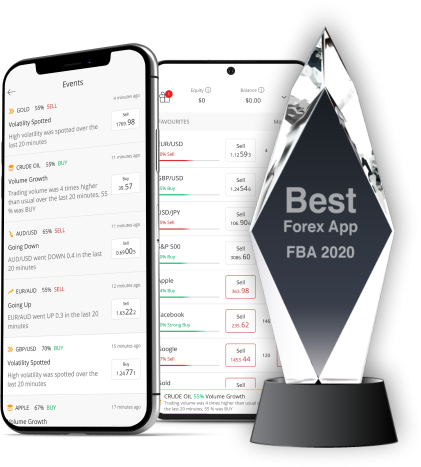
In 1960, the first REIT was created. This law, also known as Public Law 86 779, was created to ensure equal opportunities for all real-estate investors. American Realty Trust was first REIT. Its founder, Thomas J. Broyhill, was a relative of U.S. Joel Broyhill, a Virginia congressman, was the primary supporter of REITs. Broyhill had been a realtor and was the first to support REITs.
Investing In A REIT
Before you invest your money in a REIT (real estate investors trust), you need to be familiarized with REITs. These companies can be purchased either through a brokerage fund or an exchange traded fund. These companies have historically performed well, and most investors look for companies in the FTSE NAREIT Equity REIT Index, which is a free-float adjusted market capitalization-weighted index of U.S. equity REITs.

The benefits of investing in a REIT
You can diversify your portfolio by investing in REITs, which provide passive income and a way to make passive income. REITs typically pay dividends of at least 90% of taxable income to shareholders. REITs can be purchased and sold quickly, in contrast to equity stocks, which are not liquid. In addition, they tend to pay higher dividends, which benefits income-oriented investors.
Retirement account: Invest in REITs
You can add real estate exposure by investing in a REIT via a retirement account. This type of investment isn't for everyone. Investing in one REIT is the same as buying stock in one company. While this can add another sector to your portfolio, it does not necessarily create diversification. To learn more about your options regarding real estate, you should speak to your employer's benefits department.
Fundrise eREITs
eREITs (electronic real estate investor trusts) are commonly called eREITs. Their shares are taxed at the individual investors level and not at company level. However, Fundrise EREITs are not an exception. Instead of taxable distributions to unit holders, the company will distribute a high yield cash distribution at the end of each quarter. This is a lucrative additional revenue stream for investors looking for a steady income stream.

The growth of REITs
REITs are a way to invest in properties and increase interest in real property. The REITs business model is built on issuing debt and raising capital. Low-cost capital was difficult during the credit crunch. Many investors today are concerned about the increase in interest rates. However, global interest rates are still at historic lows. REITs are particularly sensitive to changes in interest rates and are a useful diversifier for the equity portion of an investor's portfolio.
FAQ
Why is it important to have marketable securities?
An investment company exists to generate income for investors. It does this by investing its assets in various types of financial instruments such as stocks, bonds, and other securities. These securities are attractive to investors because of their unique characteristics. They may be safe because they are backed with the full faith of the issuer.
The most important characteristic of any security is whether it is considered to be "marketable." This refers primarily to whether the security can be traded on a stock exchange. A broker charges a commission to purchase securities that are not marketable. Securities cannot be purchased and sold free of charge.
Marketable securities are government and corporate bonds, preferred stock, common stocks and convertible debentures.
Investment companies invest in these securities because they believe they will generate higher profits than if they invested in more risky securities like equities (shares).
Are bonds tradable?
Yes, they are. As shares, bonds can also be traded on exchanges. They have been traded on exchanges for many years.
You cannot purchase a bond directly through an issuer. You will need to go through a broker to purchase them.
Because there are fewer intermediaries involved, it makes buying bonds much simpler. You will need to find someone to purchase your bond if you wish to sell it.
There are many kinds of bonds. Some pay interest at regular intervals while others do not.
Some pay interest every quarter, while some pay it annually. These differences make it possible to compare bonds.
Bonds can be very helpful when you are looking to invest your money. If you put PS10,000 into a savings account, you'd earn 0.75% per year. If you were to invest the same amount in a 10-year Government Bond, you would get 12.5% interest every year.
You could get a higher return if you invested all these investments in a portfolio.
How Share Prices Are Set?
The share price is set by investors who are looking for a return on investment. They want to make a profit from the company. They buy shares at a fixed price. If the share price increases, the investor makes more money. Investors lose money if the share price drops.
An investor's primary goal is to make money. This is why investors invest in businesses. They are able to make lots of cash.
Who can trade in stock markets?
Everyone. All people are not equal in this universe. Some people are more skilled and knowledgeable than others. So they should be rewarded for their efforts.
There are many factors that determine whether someone succeeds, or fails, in trading stocks. If you don’t know the basics of financial reporting, you will not be able to make decisions based on them.
So you need to learn how to read these reports. You must understand what each number represents. You should be able understand and interpret each number correctly.
Doing this will help you spot patterns and trends in the data. This will enable you to make informed decisions about when to purchase and sell shares.
You might even make some money if you are fortunate enough.
What is the working of the stock market?
Shares of stock are a way to acquire ownership rights. A shareholder has certain rights. A shareholder can vote on major decisions and policies. He/she can seek compensation for the damages caused by company. He/she can also sue the firm for breach of contract.
A company cannot issue more shares that its total assets minus liabilities. It's called 'capital adequacy.'
A company with a high capital sufficiency ratio is considered to be safe. Companies with low ratios of capital adequacy are more risky.
What's the difference among marketable and unmarketable securities, exactly?
The differences between non-marketable and marketable securities include lower liquidity, trading volumes, higher transaction costs, and lower trading volume. Marketable securities on the other side are traded on exchanges so they have greater liquidity as well as trading volume. You also get better price discovery since they trade all the time. However, there are many exceptions to this rule. For example, some mutual funds are only open to institutional investors and therefore do not trade on public markets.
Marketable securities are more risky than non-marketable securities. They are generally lower yielding and require higher initial capital deposits. Marketable securities are typically safer and easier to handle than nonmarketable ones.
For example, a bond issued by a large corporation has a much higher chance of repaying than a bond issued by a small business. The reason is that the former will likely have a strong financial position, while the latter may not.
Because they are able to earn greater portfolio returns, investment firms prefer to hold marketable security.
Statistics
- Ratchet down that 10% if you don't yet have a healthy emergency fund and 10% to 15% of your income funneled into a retirement savings account. (nerdwallet.com)
- "If all of your money's in one stock, you could potentially lose 50% of it overnight," Moore says. (nerdwallet.com)
- Individuals with very limited financial experience are either terrified by horror stories of average investors losing 50% of their portfolio value or are beguiled by "hot tips" that bear the promise of huge rewards but seldom pay off. (investopedia.com)
- For instance, an individual or entity that owns 100,000 shares of a company with one million outstanding shares would have a 10% ownership stake. (investopedia.com)
External Links
How To
How to create a trading plan
A trading plan helps you manage your money effectively. It helps you understand your financial situation and goals.
Before you start a trading strategy, think about what you are trying to accomplish. You might want to save money, earn income, or spend less. If you're saving money, you might decide to invest in shares or bonds. If you are earning interest, you might put some in a savings or buy a property. Perhaps you would like to travel or buy something nicer if you have less money.
Once you have a clear idea of what you want with your money, it's time to determine how much you need to start. This depends on where your home is and whether you have loans or other debts. Consider how much income you have each month or week. The amount you take home after tax is called your income.
Next, you will need to have enough money saved to pay for your expenses. These include rent, food and travel costs. These all add up to your monthly expense.
You'll also need to determine how much you still have at the end the month. That's your net disposable income.
You now have all the information you need to make the most of your money.
You can download one from the internet to get started with a basic trading plan. Or ask someone who knows about investing to show you how to build one.
For example, here's a simple spreadsheet you can open in Microsoft Excel.
This displays all your income and expenditures up to now. This includes your current bank balance, as well an investment portfolio.
Here's an additional example. This was designed by a financial professional.
This calculator will show you how to determine the risk you are willing to take.
Remember: don't try to predict the future. Instead, be focused on today's money management.